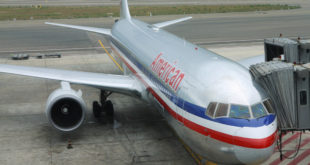 If the TSA’s system at the airport (let’s say for example) is 99% accurate, does this mean they are 99% accurate in catching terrorists? That would be my assumption, until I read an article our guest poster, Art Carden wrote on Forbes.com.
If the TSA’s system at the airport (let’s say for example) is 99% accurate, does this mean they are 99% accurate in catching terrorists? That would be my assumption, until I read an article our guest poster, Art Carden wrote on Forbes.com.
According to Art, when a NSA program (talking about a different governmental body now) is 99% accurate, this means it tends to find one false positive per 100 people. But since the sample size of terrorists is much smaller than the group of public at large, this skews the effectiveness in actually identifying terrorists. Art, the economist, does the math. I am just badly reiterating, so check out his article.
He concludes organizations like the NSA or the TSA “…would have to have a test that’s about as accurate as a DNA test. I’m willing to believe that’s possible, but possible certainly isn’t the same thing as likely.”
I tried to track down an accuracy study of the TSA scanning process. I was surprised to find a study showed that over time, scanners get better at spotting specific shapes. In this study, they were 88% accurate as opposed to the amateurs, who were 82% accurate.
That doesn’t really give me an overall picture of who accurate the process is though. What Art’s art-icle (see what I did there) did show me is I should always question a statistic I am given. A 99% accurate test does not mean it is 99% accurate at catching terrorists.
 Le Chic Geek
Le Chic Geek




Well, judging by own experiences with my carry on luggage going through the xray machines, I doubt they catch 99%. I haven’t put my liquids in a baggy in years, they never question me (thankfully). But an even bigger issue is that about half the time I forget to drink all of the water in my bottle and they RARELY ask me to rerun my backpack or purse after emptying the bottle. It happened this weekend once again. Doesn’t make me feel secure (and when is the last time they caught something in a shoe, really?)
Your conclusion isn’t quite right . . . the test is 99% accurate at catching terrorists (probability of a positive test result given that a person is a terrorist is 99/100). What this doesn’t mean, though, is that the test is 99% accurate at identifying terrorists: there is still only a 1 in 100,000 chance that a person flagged with a positive test result is actually a terrorist. So it’s inefficient, but false positives become more acceptable when the stakes are high.